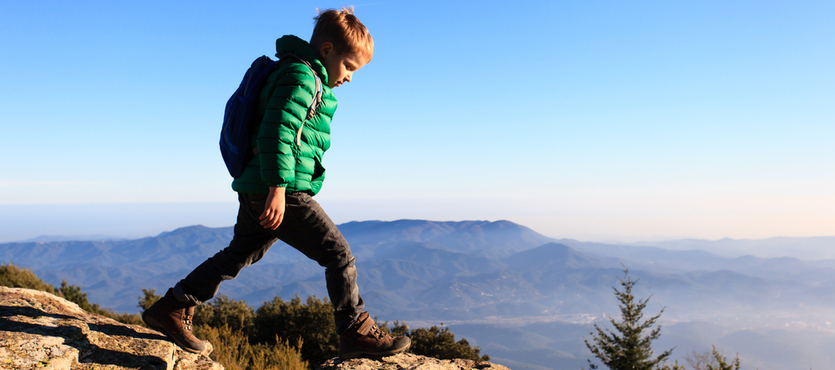Dress In Layers
Temperatures can vary dramatically depending on the amount of sunlight, the time of day, and elevation. When hiking in the cold season, layers are your friend. By wearing a lot of insulating and lightweight layers, you will be able to adjust your dressing as needed, keeping yourself comfortable in different temperatures. Also, lightweight layers make storage easy, so when the weather warms up, you don’t have to haul bulky jackets around.
Protect Your Feet
Not only should your fall hiking boots be comfortable and warm but also need to be compatible with your cold-weather shoes, crampons, and other traction devices. Having frozen toes and cold feet on a hike is not pleasant. It is essential to keep your feet dry, so wearing and carrying an extra pair of socks to change into is a great idea.
Pack Sufficient Supplies
Pack sufficient supplies unexpected detours and changing weather. Depending on the length of your hike, it is important to travel with plenty of snacks, water, extra layers like a hat and gloves, a first aid kit, a flashlight, and a trail map. An emergency blanket is also a must have. In case temperatures drop or a snowstorm hit unexpectedly, this can help you stay warm until you can get off the trail. A flashlight will illuminate the trail for you when darkness arrives faster than you were expecting.
Wear Sunscreen
Just because it is cold outside doesn’t mean to stop worrying about sunburns. Especially if you are hiking around places with snow on the ground. Sun rays reflect off the white snow which leads to double exposure on our faces. Make sure to apply sunscreen on the chin, around your neck, and on the underside of your nose for the best protection.
Stay Hydrated
When you are cold, it is tempting not to drink as much water as we need, especially when we are active. Or only drink hot chocolate and coffee. But under all those layers, you are still sweating and your body still needs electrolytes and water. Dehydration is a common issue during the cold season because our bodies work extra hard to maintain core temperatures. Take small sips of water often during the hike. Keep your water bottle close to your body or inside your jacket to prevent the water from freezing.
Check the Weather
During cold seasons, the weather can change quickly. Even though today’s weather forecast called for plenty of sunshine when you last checked, things could have changed fast. Pay more attention to daylight hours, wind speed, avalanche reports, and predicted rainfall. Some morning fog or minor snow could limit your visibility enough, which might cause you to miss trail signs or even where the edge of a trail is. If the weather seems risky, postpone the hike.
If you are ready to take the plunge and camp with your friends and family this season, check out Camp Live Oak. To learn more about hiking in the cold season, contact Camp Live Oak to get more information.[/vc_column_text][/vc_column][/vc_row]

